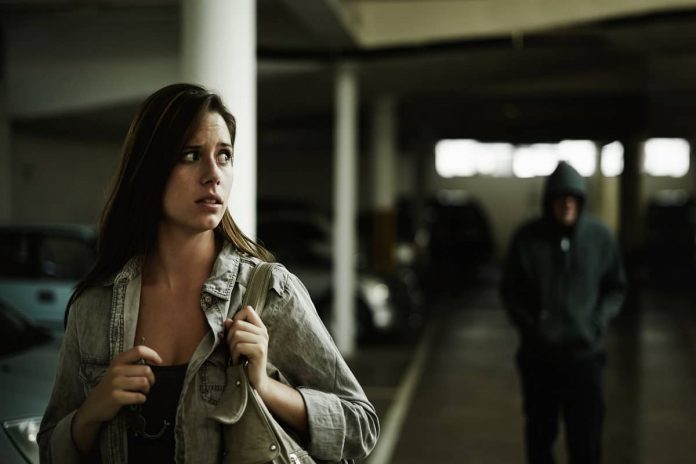Fear of strangers occurs in boys and girls when they are approached by people they do not know. This happens even when children live with caring parents and caregivers in a safe environment. This can occur when infants are about 8 months and often ends when the child reaches two years old. Children can develop this phobia at different ages.
Children that have been neglected can show higher levels of anxiety over strangers. Some children who have been removed from the home or in foster care may be afraid of being taken away or left alone. There are many signs that a child has a fear of strangers. Some children may be reticent and look pretty at strangers. Others become upset, shout or cry suddenly. Others run to their parents or caregivers and try to distance themselves from the stranger.

Fear of strangers does not happen overnight. It develops gradually as the child goes through the process of development. At some point, the child prefers their parents or caregivers to strangers. When an infant is 7 to 8 months, fear of strangers occurs because infants are more aware of the environment. At 1, they develop physical and cognitive skills that can intensify the fear of strangers. When young children play with other children, it appears as apprehension about getting involved.
Some children develop a severe fear of strangers bordering on terror. They may avoid all contact with strangers or react strongly when strangers are in the home. They have looks of anxiety and worry on their face when they come in contact with strangers. They may scream and kick when a stranger attempts to comfort or hold them.
There are different ways to deal with the fear of strangers in children as a parent or caregiver. Tell family and friends to approach the child slowly and let them get to know them. Please do not pick them up and touch them until they have visited a few times. Let the child warm up to them. When spending time with your children, introduce them to new people. Take them on trips to restaurants, zoos, parks and places other children and adults go.
Hold your child when introducing them to strangers. Be patient with children. Learning to interact with other children and adults takes time. Respect the fear. Do not ridicule or make fun of a child afraid of strangers. Please don’t ignore the fear it will only grow worse over time. Don’t worry about the stranger’s feelings. Be more concerned about your child. Tell others about the fear, so the adult won’t be offended if the child rejects them.
Also Read:
When hiring a babysitter, you may want to introduce them to the child a few weeks before using them. This way, they get used to the stranger taking care of them for a few hours or evening. Many older children have a fear of strangers. They are uncomfortable in groups or with meeting new people. They often fear that something terrible will happen or they will be the victim of a crime. Sometimes it is caused by a traumatic event with a stranger that frightened them.
This phobia may progress to produce panic attacks in some children. A panic attack involves perspiring, rapid heartbeat, shaking and trembling and racing thoughts. It can be frightening for the child because they avoid situations and go out alone, especially teens. They avoid playing outside with friends, at the local park, or shopping at the mall.
Sometimes children’s fear of strangers stems from overprotective parents that don’t let them play outside, on playgrounds or parks or walk anywhere alone, even in public places where it is safe. They may end up playing inside more. Reasons range from parents fearing strangers to traffic accidents or upsetting neighbours with noise.
Allowing kids to play outside for an hour daily is good physical recreation. Driving them to the playground or a park is another way to handle the problem. Allowing them to walk with friends reasonably far is another way to reduce the fear of strangers’ children.
Outdoor play builds imagination and skills in children who often have to learn to play games and get along with others. It makes physical and mental skills that don’t come from sitting behind a computer all day or TV set. It may be an essential part of helping children with learned fear of strangers where it stops you from regular everyday activity.
Active play is less expensive than some sports. It can be walking or running in the park, using the swings and playground equipment, playing a casual baseball game or softball with other kids, and other creative games. The benefits of outdoor play are fresh air and exercise; Many kids lack the freedom that this type of play allows, like looking for insects, finding four-leaf clovers, and seeing an owl fly out of a tree at night.
New playgrounds are being designed like The Land, which is often an acre in size. This one is located in Wales. It is an adventure playground designed for kids to use with loose parts that can be moved around and create their structures. The designer wanted the children to have a chance to play with less supervision. The point was for kids to face risks and conquer them alone, which builds self-esteem.
This playground is like many built after World War II in London. Children were expected to grow up and fight wars and were not shielded from danger. The designer said that when she showed a playground video, many parents thought it was insane, especially with some children’s activities. There are few of these playgrounds left around, and building a new one seems like an act of defiance.
These playgrounds are staffed by professionally trained workers that keep their eyes on the kids but try not to interfere in the process. Workers describe working at Land as loitering with intent. In the two years this playground has been opened; no one has been injured outside an occasional scrape. One of the activities is building and utilizing fires which would scare many parents. Parents are encouraged not to intervene but let kids play with the staff.
Gryphons, a playground designer, began trying to sell the playground to local families in 2006. She talked about the benefits of outdoor play for kids and explained to parents that green would look messy and be fenced in. She discussed some of the activities kids used to do and told parents to remember their childhoods. Griffin said she swam in a dangerous river when she was a kid and would have been grounded had her parents found out.
Childhood values and patterns have shifted over one generation to create fear of strangers. Activities that were normal in the past, like playing ball in the street, letting your kids walk alone to school with another classmate or going to a playground alone, have dropped by 90 per cent or more. Many parents feel the world is more dangerous than when they were young.
Reports suggested that many children have been wounded in playground accidents, leading to fear and design reform. Many children have been injured on unsafe playground equipment, and many parents have sued for damages. Many playgrounds removed equipment because they could not afford to be sued by parents for accidents. Many gardens now have rubber flooring and standard equipment with no risk due to accidents.
Some say perhaps we have gone too far and that risk is part of healthy development for children. Some safety experts think children are too fragile and not intelligent enough to access risk. The loss is that playgrounds have turned into bland, sterile places with no risk or challenge for children. Sandsetter, a researcher who wrote a paper on children and risky play, identified six factors children need in space.
They need a chance to explore height and see things from the top, using sharp tools like scissors, knives, or heavy hammers, learn how to play near water or use fire properly, rough and tumble play like wrestling and fighting, biking, skateboarding and exploring on their own. When kids are left alone and learn to take responsibility for their actions, this can be thrilling for them. This attention to safety has not had much difference in the number of accidents children have had.
Playgrounds’ rubber surfaces have increased bone injuries because kids are less afraid of hurting themselves. Some say we think accidents are preventable, not a natural part of life. Many abductions happen in divorce when one parent steals the child because they don’t have custody. This is more common than abduction by strangers. Some of the cultural shift and fear of strangers has come from parents. This is some perspective on the increasing fear of strangers for youth in our society.




